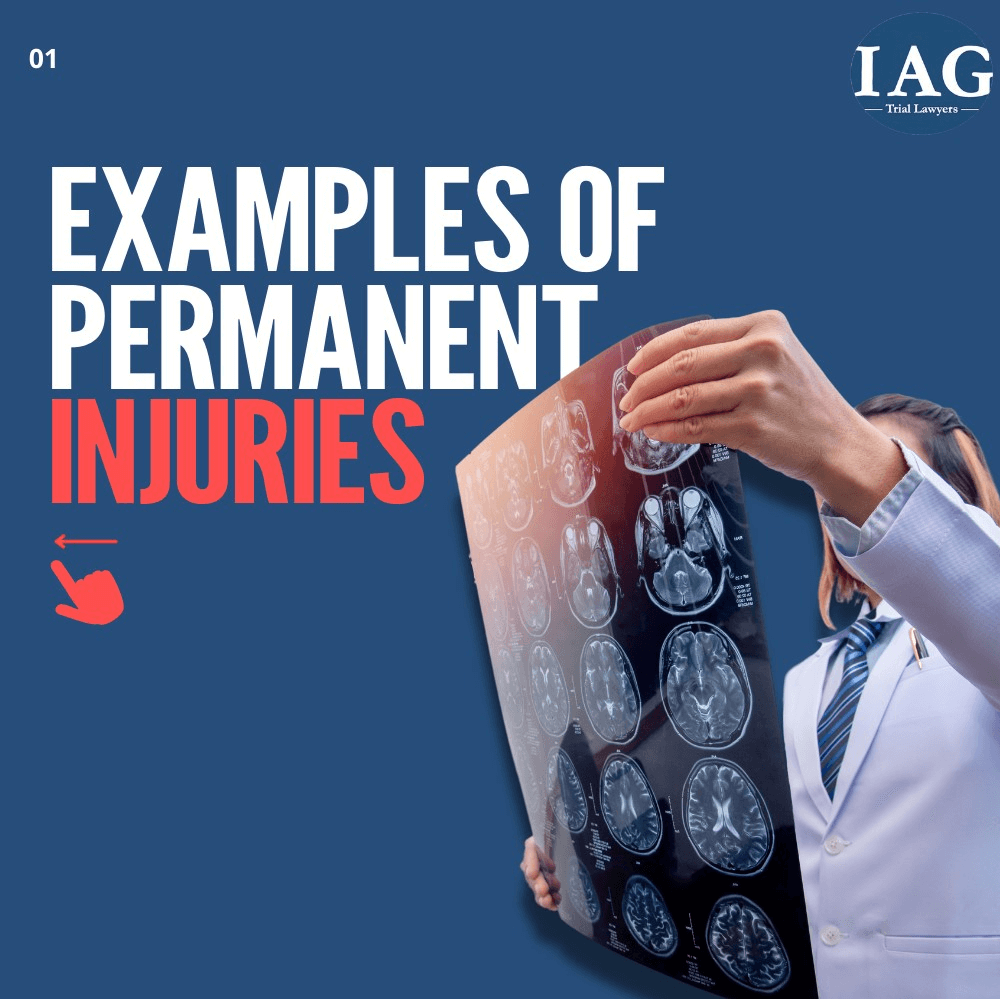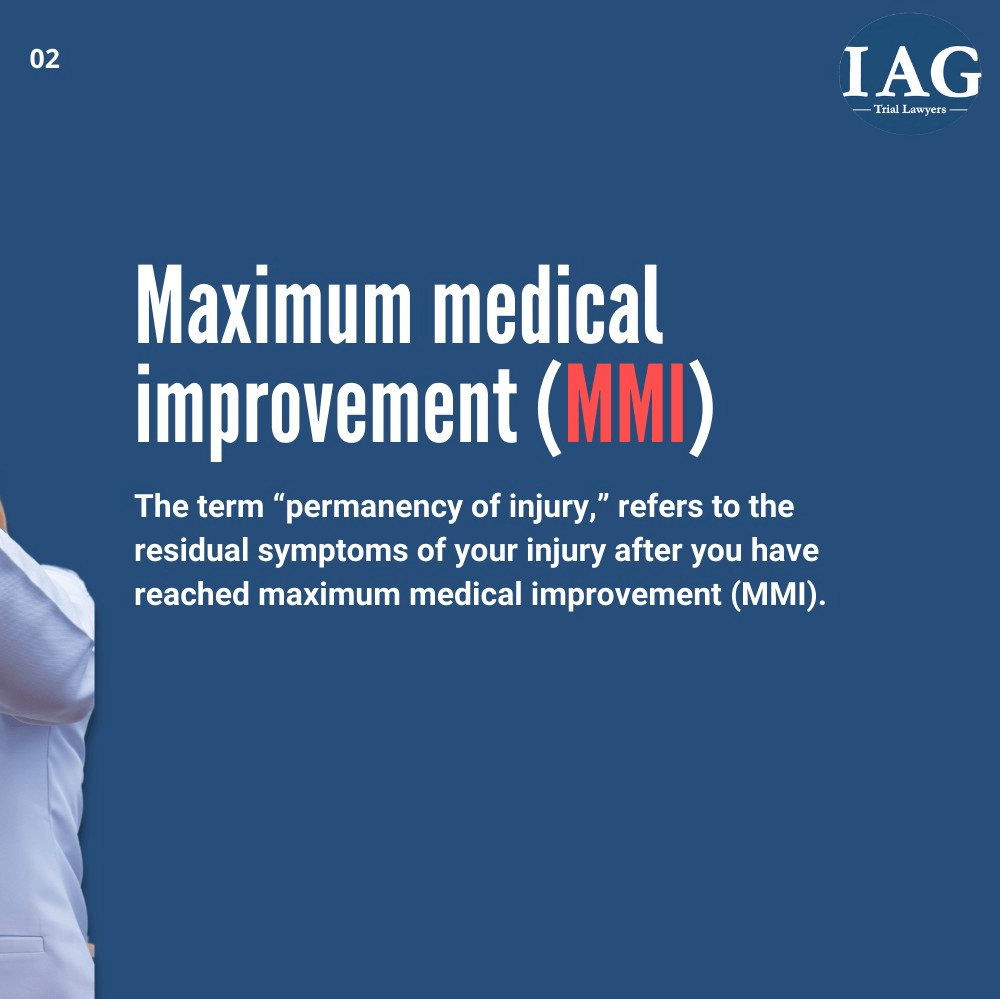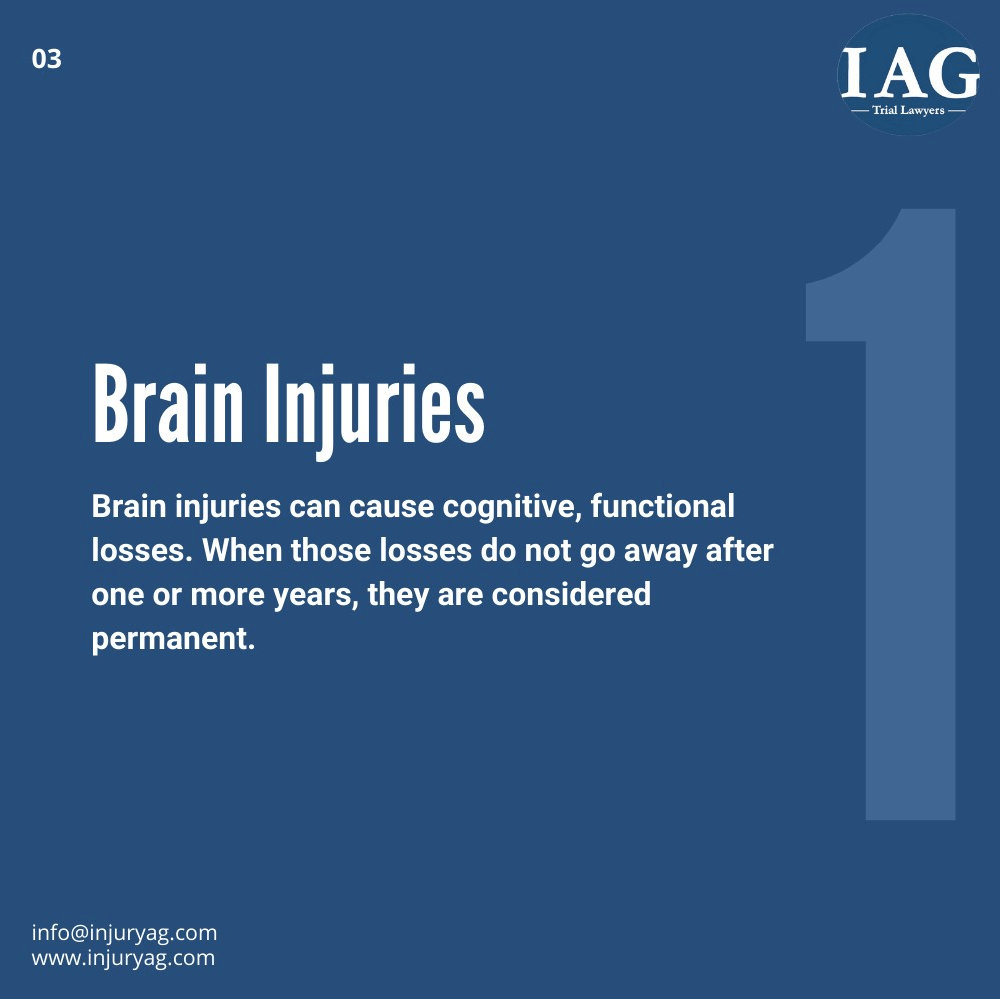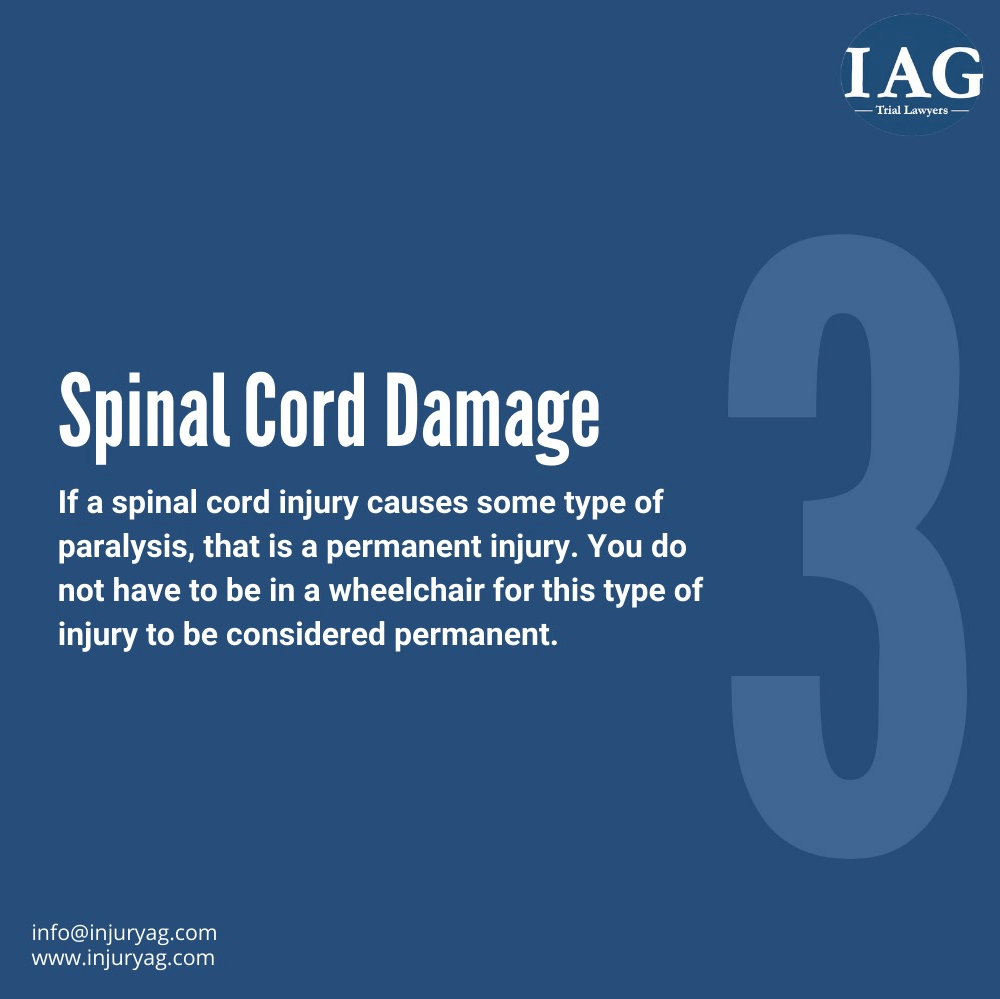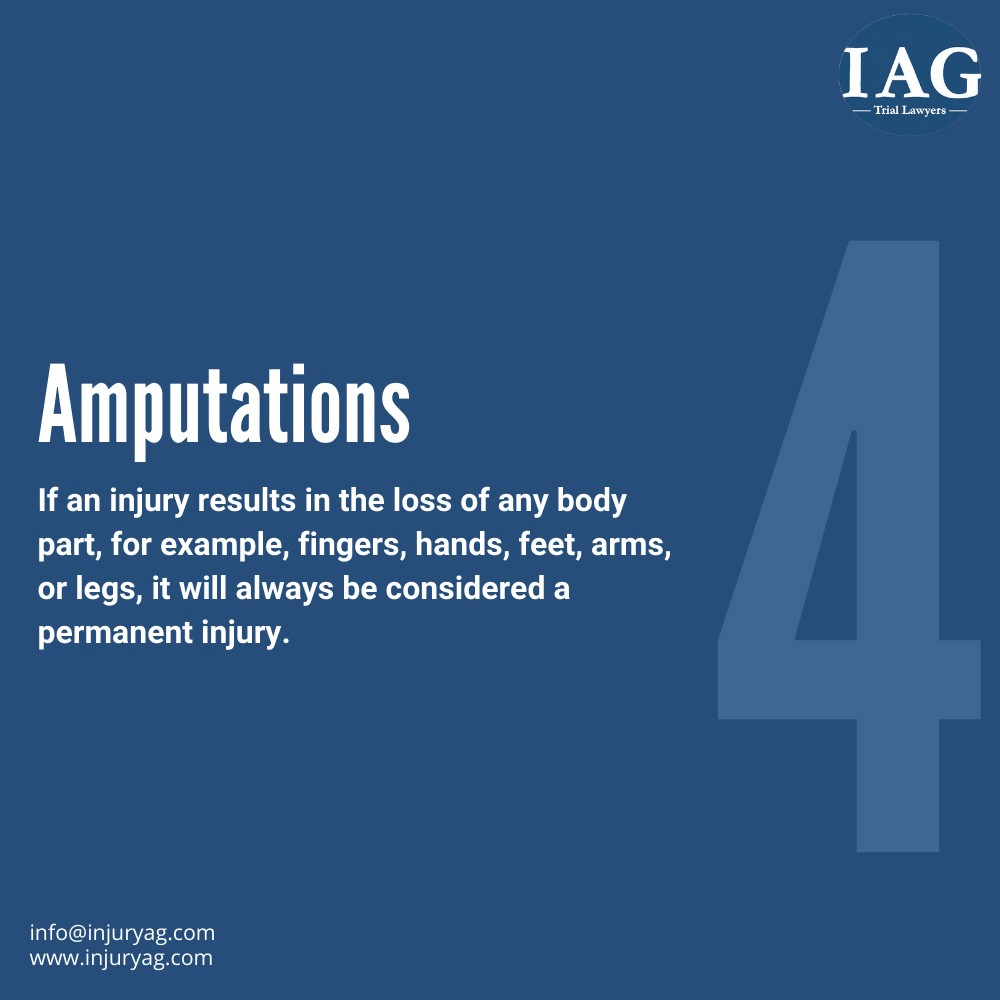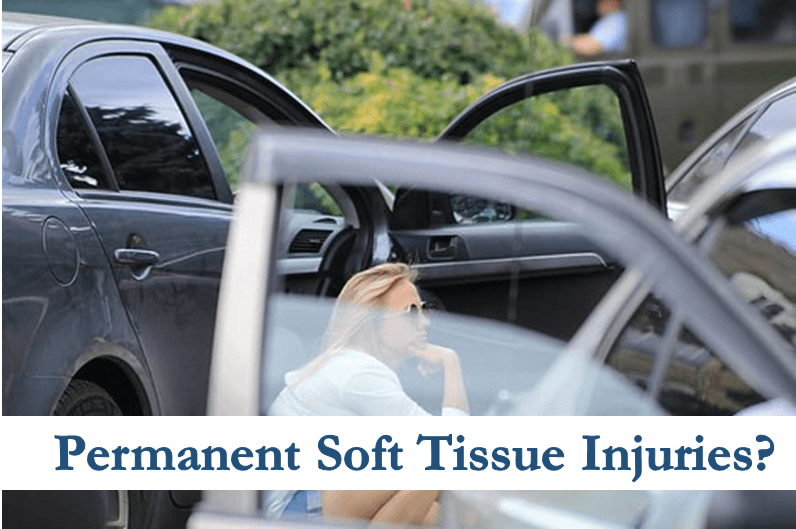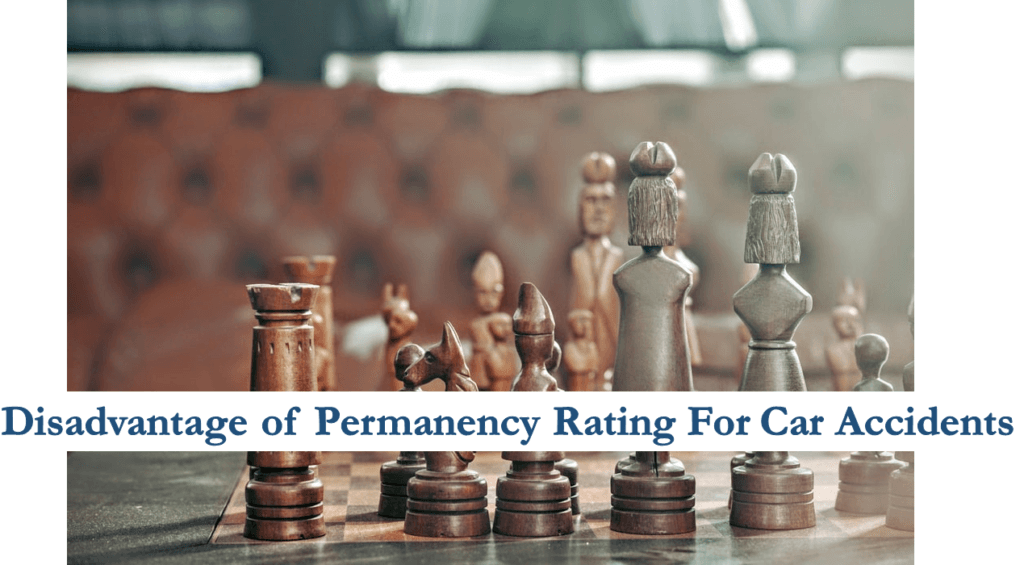Article Updated: January 7, 2023
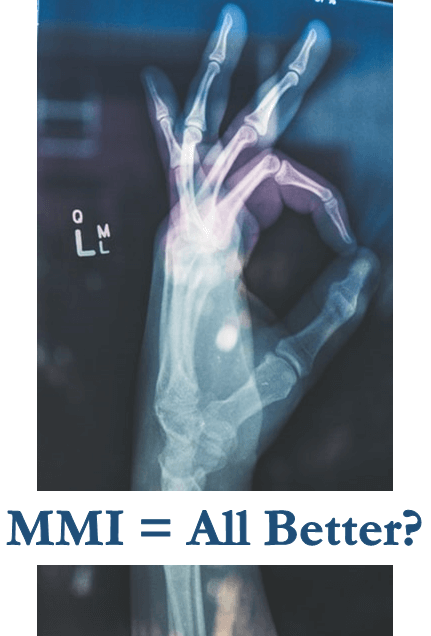
In this free guide, you will learn:
♦ How to evaluate permanency of injury
♦ What does MMI stand for
♦ Can a soft tissue injury be permanent
♦ Car accident permanent injury strategy
♦ Permanent injury settlement amounts
How do I know this information? I’ve been practicing law for 10+ years, and have helped accident victims recover over $35,000,000 for their injuries. You are welcome to read more about my firm, browse my insurance claim guide library, or my library with settlement values and strategies for different injuries. My short bio is at the bottom of this page.
Or, keep scrolling and use the hyperlinked table of contents below to find exactly what you’re looking for about permanent injuries. If you don’t find what you’re looking for, send me a message. I’m happy to research and write an article on a topic of your interest.
Table of Contents
Permanent Injury 411
1 – What is MMI
2 – Permanency of Injury Defined
3 – Can Soft Tissue Injury Be Permanent?
Strategy & Settlements
4 – Car Accident Permanent Injury Strategy
5 – Permanent Injury Settlement Amounts
Get Help
6 – Settlement Help with Permanent Injuries
Article Resources
7 – Supporting Citations, Literature & Resources:
8 – About the Author
What is MMI
Some people think maximum medical improvement is strictly a workers’ compensation phrase, but they are wrong. It is a phrase used in every accident case and claim. Let’s start with a basic definition and explain further from there.
What Does MMI Stand For
MMI is medical term and acronym for “maximum medical improvement.”
MMI is reached when an injured person is not expected to improve any further following an injury event, despite receiving all available treatment to cure that injury and help the injured person return to pre-injury baseline health.
The American Medical Association has guidelines for assessing and calculating MMI, but use of those guidelines should be limited to workers’ compensation cases (I will explain why in a later section, below).
MMI’s Relationship to a Permanent Injury
This one is easy to explain. If you have reached maximum medical improvement or MMI, yet you still have residual symptoms from your accident injuries, you have a permanent injury.
It really is that simple in terms of medical facts and the reality of your body’s recovery. However, be prepared for the insurance company and defense lawyers to argue and suggest that:
♦ You have reached MMI and are back to baseline health
♦ You are faking or exaggerating your residual symptoms
♦ Your residual symptoms are not as bad as you say they are
MMI & Permanent Injury Example

In this example, you have reached MMI yet have a permanent injury. It is certainly possible to reach MMI and have no permanent injury, so this is a case by case analysis.
Permanent Injuries are Hard to Measure
MMI and long term injuries are rarely that easy to measure, but the above pushup/running hypothetical is a clear example of a long term injury, because your baseline health is measurably, and definitively, lower than it was before your accident.
The reason injured victims need a savvy lawyer is because it is almost never that simple. Instead, you have to characterize and verbalize differences in your efficiency with, or ease of ability in completing, different life activities (such as mowing the lawn). It takes skill to present that in a way that is effective, and that’s what a savvy litigator brings to the table for you.
Permanency of Injury Defined
When lawyers use the lingo, “permanency of injury,” they are talking about the residual symptoms of your injury after you have reached maximum medical improvement / MMI.
Examples are helpful in illustrating what qualifies as a permanent injury.
Brain Injuries
Brain injuries can cause cognitive, functional losses. When those losses do not go away after one or more years, they are considered permanent. For example, if it takes you longer to remember things, or you are more forgetful after a car accident, and those symptoms last, that is a permanent brain injury.
Burn Injuries
Severe burns that damage the skin and even muscles of the victim can also cause permanent damage to lungs from inhalation, or leave visible scars on your body. All scars are considered permanent, as scars do not go away without plastic surgery. If you have decreased lung capacity following inhalation of fumes, that is considered a permanent lung injury.
Spinal Cord Damage
If a spinal cord injury causes some type of paralysis which restricts your mobility, that is a permanent injury. You do not have to be in a wheelchair for this type of injury to be considered permanent. Any permanent mobility loss counts (think of the pushup example from earlier in this article).
Sensory Losses
Some permanent injuries can be from loss of eyesight, hearing, or sense of taste. If your hearing or vision is decreased and it does not get better after a year, that is considered a permanent injury. Maximum medical improvement payouts for these injuries are the greatest, because your basic senses are essential to employment, self care, and activities of daily living (“ADLs”).
Amputations
If an injury results in the loss of any body part, for example, fingers, hands, feet, arms, or legs, it will always be considered a permanent injury. Even if you get prosthetics, the injury is still considered a long term injury deserving of a larger settlement payout.
Can Soft Tissue Injury Be Permanent?
Is Soft Tissue Injury Permanency Possible
Yes, a soft tissue injury can be permanent, and there is ample science to prove it that we have in our private litigation library.
Most insurance companies and their lawyers argue that soft tissue injuries are never permanent, and you recover after 3-4 months. That is absolutely false.
These injuries have a recovery process, where torn and stretched tissue rehabilitate but never look the same. The recovered tissue will not have the same physical or anatomical properties as tissue that was not damaged.
In other words, the structural condition of the tissue is forever changed, which means as a matter of fact that soft tissue injuries are permanent.
MMI’s Relation to Soft Tissue Injury Permanency
From what you learned above about maximum medical improvement, you know the follow-up question is: are there any residual symptoms related to your soft tissue injury?
For some people the answer is yes, and others the answer is no.
There are scientific studies that have followed groups of people who suffered soft tissue injuries for 5, 10 and 30 years. The studies vary by 10% or more, but they all show relatively the same data: that approximately 45% of all soft tissue injuries are permanent.
That is just one study we cite to above, albeit from a noteworthy medical journal. We have about a dozen medical journals proving this one research point that we use to help our clients win permanency arguments for their soft tissue injuries.
Car Accident Permanent Injury Strategy
The Problem
A lot of multi-practice lawyers, in particular those who do workers’ compensation cases and car accident cases, will make a big mistake in dealing with car accident permanent injuries.
In workers’ compensation cases, the expert doctors will assign specific permanency ratings to your injury. In those cases, your maximum medical improvement payout will be tied to your percentage of permanency. In fact, it is mandatory in workers’ compensation cases that your injury have a permanency rating.
These multi-practice lawyers will send you to these workers’ compensation doctors, who will give you a permanency rating for your car accident injuries. However, car accident cases do NOT require a permanency rating.
Why is this a problem? Without getting too into the weeds, you are now married to a specific percentage of disability for a particular body part which creates a ton of credibility and impeachment problems for you and the expert doctor which are completely avoidable.
Stay away from any impairment rating chart for auto accident cases, and from any specific impairment or disability rating for these cases, too. That is my best free advice on this point (although, just to be clear, nothing in this article or on this website is legal advice, and does not create an attorney-client relationship).
The Solution
The better course, in my view, is to have the car accident doctor simply explain why and how your symptoms and injury are permanent, how that will negatively impact you long term, and support those opinions with medical and scientific evidence. That can be done without pigeon holing you onto a particular percentage.
This will help your car accident permanent injury settlement, too, because it will prevent the insurance adjuster from fighting your permanency with a counterattack expert report that says you are disabled at a lower percentage (which happens in workers’ compensation cases).
If your car accident lawyer is sending you to a doctor for a permanency rating, I would be concerned about that lawyer’s long term strategic approach in handling and resolving your case.
Permanent Injury Settlement Amounts
Permanent Injury Settlement Basics
Some car accident permanent injury settlement amounts are below. You are welcome to review these, but in my view they are not very helpful in figuring out the value of your permanent injury claim. Why? Because a permanent injury settlement is mostly based on the type of injury and where on your body that injury happened, not the fact that the injury is permanent.
I explain this on a different page, that two injury factors dictate the value of your insurance claim. You are better off using that page to find your specific type of injury with related settlement values, as that will be more helpful in narrowing the range of your possible permanent injury settlement or verdict (I explain why these values are discussed in terms of “ranges” in our settlement and verdict page).
Sample Permanent Injury Settlements & Verdicts
SAMPLE VERDICT (Alabama): $56,000. An uninsured driver injured a male in his early 60’s, who suffered a knee fracture in this car accident. This left a permanent scar on the man’s knee, and he received a 25% permanency rating (a/k/a an impairment rating) for his knee. He had about $10k in medical expenses. Another $40k was for future medical care, which was a likely knee replacement. $0 for pain and suffering is a little harsh, but that’s what happened.
SAMPLE VERDICT (California): $805,000. A women suffers an aortic dissection after being rear ended in a car accident. The aortic dissection was a permanent injury because it required lifetime medical management and possible surgery. The insurance company made a pretty lousy argument in this case – that the aortic dissection spontaneously happened after the accident. The jury obviously did not buy this argument, which resulted in an almost million dollar verdict.
SAMPLE VERDICT (Maryland): $10,000. This was a classic rear end accident case with soft tissue injuries to the neck, back and knees. The plaintiff argued her soft tissue injuries were permanent. She had about $14k in medical expenses, so the verdict is very telling. Clearly, the jury did not buy the permanency argument, and must have thought some of the medical treatment was either unnecessary or unrelated to the accident.
SAMPLE VERDICT (Pennsylvania): $20,000. In this underinsured motorist case, the plaintiff claimed permanent injuries after being at an intersection. The jury found that the plaintiff was 45% at fault for the accident, and also did not agree that the plaintiff suffered a serious bodily impairment. Presumably, if the plaintiff was found to be not at fault at all, the verdict would be approximately doubled so this result would be around $40,000.
SAMPLE VERDICT (Maryland): $200,000. This was a left turn intersection accident. The plaintiff claimed a permanent spinal injury with long term S-1 instability. The jury awarded approximately $15k for past medical expenses, and another $185k for pain, suffering, and other non-economic damages. The insurance company argued that the plaintiff was contributorily negligent (which is a 100% bar to recovery in Maryland), and that she assumed the risk of her injuries. The insurance limits in this case were only $100,000, so the plaintiff did not recover the entire $200,000. However, this result does tell us something about potential permanent injury settlement amounts for S-1 instability injuries.
Los Angeles Lawyers for Your Permanent Injury Claims
If you need help resolving your permanent injury claim, our Los Angeles legal team is here for you. Even if you are outside of Los Angeles, call us, we can help.
Call, email, or message us 24/7 using the contact form below to get your free consultation. We do our best to respond to every injured victim within 24 hours, even on weekends.
You can return to our auto claims master page, which lists all of our claim strategy articles, to get more free help about claims strategy, including how to calculate claim worth.
We also have a page explaining auto injury settlement amounts and strategies.

Supporting Citations, Literature & Resources:
Artz, Jerry; Penn, Daniel; Alchemy, John, Method of and System for Determining a Highly Accurate and Objective Maximum Medical Improvement Status and Dating Assignment, April 2018, Hamline University / Rate-Fast Collaboration
Rondinelli R., Ranavaya M. (2014), Current American Medical Association Guidelines for Evaluating Musculoskeletal Impairment at Maximum Medical Improvement. In: Gatchel R., Schultz I. (eds) Handbook of Musculoskeletal Pain and Disability Disorders in the Workplace. Handbooks in Health, Work, and Disability. Springer, New York, NY.
Can soft tissue damage be permanent? April 2020, by Spine Health & Wellness
Danielle Campagne, MD, Overview of sprains and other soft-tissue injuries, March 2021, University of San Francisco – Fresno
Hohl, Mason, Soft-Tissue Injuries of the Neck in Automobile Accidents, The Journal of Bone & Joint Surgery: December 1974 – Volume 56 – Issue 8 – p 1675-1682
About the Author
Article Author: This law article was written by attorney Ray Benyamin, Esquire. Mr. Benyamin received his Juris Doctor degree from the Thomas Jefferson School of Law, and his license to practice law from the State Bar of California. His law license number is 277263. He has been practicing law for 10 years. Mr. Benyamin is a registered member of the following legal organizations: Consumer Attorneys Association of Los Angeles (CAALA), the Los Angeles County Bar Association (LACBA), the State Bar of California, the American Bar Association (ABA), and the American Association for Justice (AAJ). Mr. Benyamin has personally helped his clients recover over $10,000,000 in vehicle accident insurance claims in the State of California.
Our Lawyers Serve Clients in Los Angeles, California & Nationally
Serving all of Los Angeles, including Arcadia, Beverly Hills, Claremont, Canoga Park, Chino, Chino Hills, Covina, Diamond Bar, Downey, East Pasadena, El Monte, Encino, Highland Park, Inglewood, La Verne, Long Beach, Malibu, Montebello, Monterey Park, North Hollywood, Northridge, Pasadena, Pomona, Rancho Cucamonga, Reseda, Rosemead, San Gabriel, San Dimas, Santa Monica, Sherman Oaks, South Bay, South LA, South Pasadena, Sunland, Tarzana, Thousand Oaks, Torrance, Van Nuys, Venice, West Covina, West Hollywood, and Westlake Village.
Serving all of California, with a focus on Kern County, Los Angeles County, Orange County, Riverside County, San Bernardino County, San Diego County, Santa Barbara County, and Ventura County.
Serving nationwide in all 50 states on a case-by-case basis with a national network of relationships and on a Pro Hac Vice basis.
